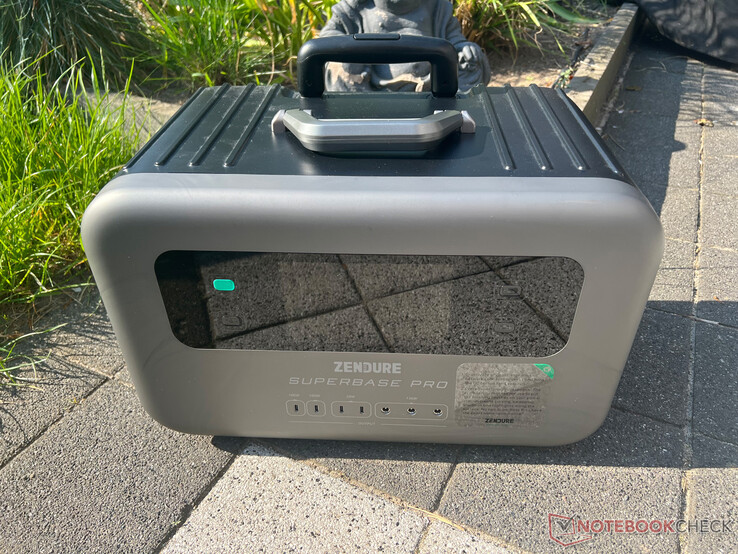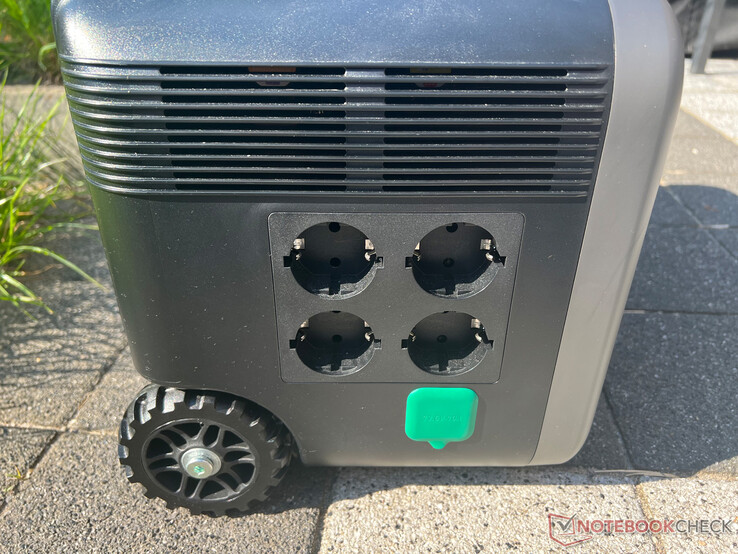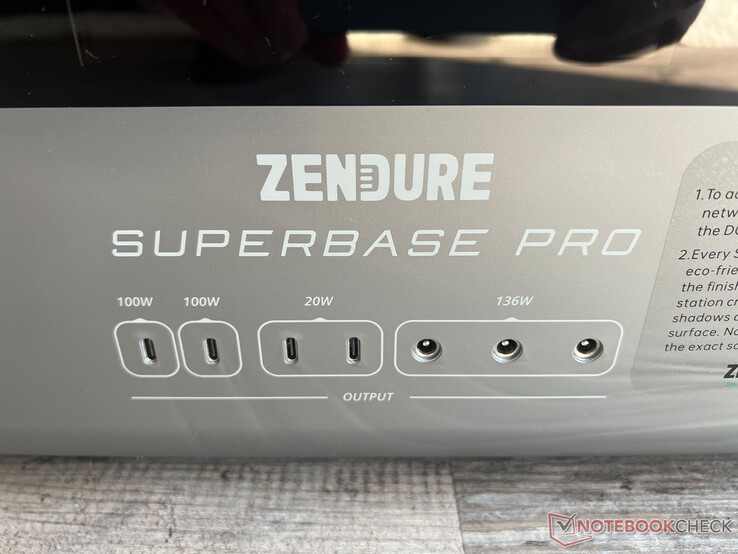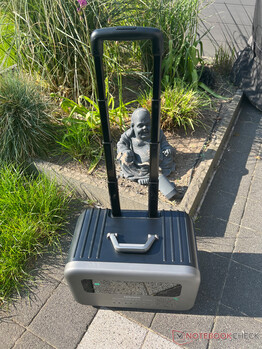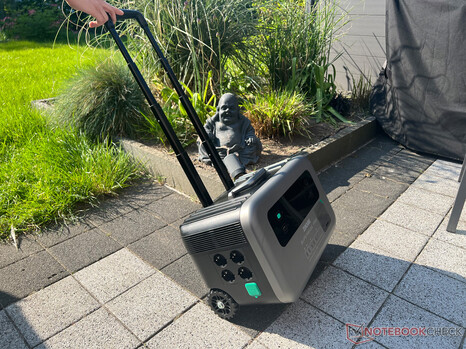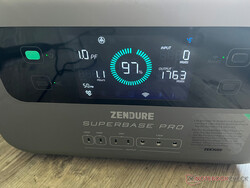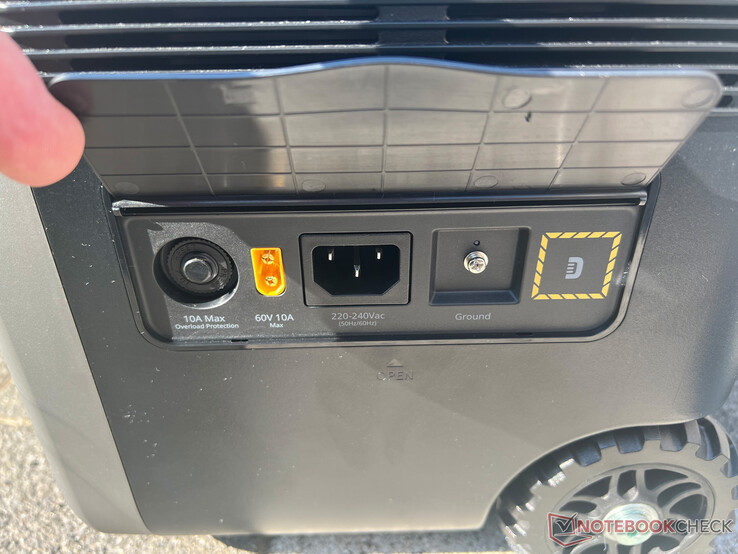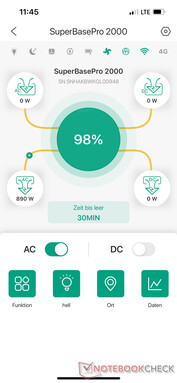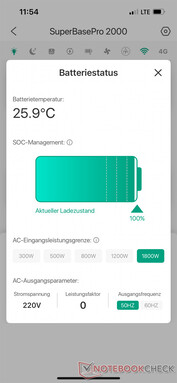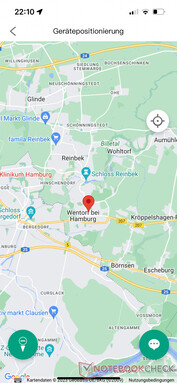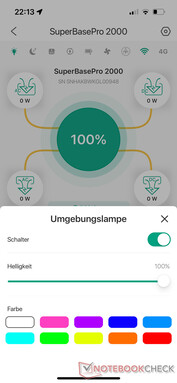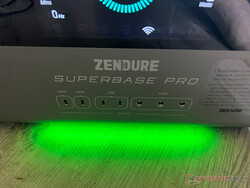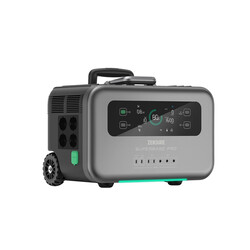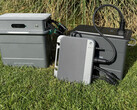Zendure SuperBase Pro 2000 in review: Powerstation with 2,000 Wh, 3,000 W, UPS, 4G, GPS and cart function
In addition to Bluetti, EcoFlow, Jackery, Anker, and others, Zendure, most recently with the new product SolarFlow, is one of the best-known manufacturers of power stations and solar generators for mobile power supply. The manufacturer offers various models.
In addition to the powerful and heavy SuperBase V with 6,400 Wh (approx. 6,300 euros at Amazon) or 4,600 Wh (approx. 4,500 euro with Amazon), the more compact and significantly more mobile Zendure SuperBase Pro 2000 (SBP2000 for short) is part of the portfolio. I took a closer look at this exact model in the past few weeks. This Zendure SuperBase Pro review describes my experiences and findings.
Zendure SuperBase Pro 2000 at a glance
The SuperBase Pro 2000 is the larger of the two variants with a 2,096 Wh (46.8 V, 44.8 Ah) Li-NMC battery (lithium-nickel-manganese-cobalt). Alternatively, it is also available as SuperBase Pro 1500 (approx. 1,900 euros at Amazon) with less capacity (1,456 Wh) but a less sensitive and longer-lasting LiFePO4 battery (lithium iron phosphate). For the present Li-NMC version, the manufacturer states that 80 percent of the capacity should still be available after 1,500 charging cycles. The smaller LiFePO4 version only reaches this figure after twice as many charging cycles.
The built-in inverter achieves a continuous output of 2,000 W. Up to 3,000 W is also possible for short periods thanks to AmpUp. Thus, the output power is slightly below that of comparable models like the Anker 767 Power House or the Bluetti AC200Max but should be long enough for most purposes of medium-sized power stations like this one.
Besides four 230 V AC sockets on the left side of the device, the Zendure SuperBase Pro also offers four USB Type-C on the front. Half of these reach 100 W and 20 W, respectively. USB Type-A is unfortunately not available at all. There is also a 12 V socket, which is also known as a car socket, as well as three DCI5521 ports, which play a rather subordinate role in this country. It would have been nice if the twelve sockets were protected with covers. However, this is only the case for the car socket and the inputs.
All of this is packed in a lighter case that weighs a good 21 kg compared to the competition, such as the Bluetti AC200MAX (approx. 2,000 Euros on Amazon), and is also quite compact at around 44 x 28 x 25 cm. Carrying it via the top-mounted carrying handle is possible with a bit of effort. It is even more convenient and practical with the telescopic handle and the two wheels on the back, thanks to which the power station can be easily pulled behind it like a suitcase.
If you want to charge a USB-A device with the solar generator, you always have to use an adapter - which is a pity and a first point of criticism, since USB-A is still often used today. At least a suitable USB-C to USB-A adapter is included in the scope of delivery. In addition, an AC power cable, an MC4 to XT60 cable, and an MC4 to AC jack cable are also included, all of which are stowed in an accessory bag.
Zendure Superbase Pro 2000 in comparison
| Specs | Zendure SuperBase Pro | Anker 767 | Bluetti AC200Max |
|---|---|---|---|
| Capacity | 2.096 Wh | 2.048Wh | 2.048 Wh |
| Continuous power | 2.00W | 2.300 W | 2.200 W |
| Charging power AC | 1,800 W | 2,200 W | 800 W |
| Charging power DC (solar) | 600 W (12 - 60 V, 10 A) |
1,000 W (11 - 32 V, 10 A; 32 - 60V, 20A) |
900 W (10-145 V, 15.2 A) |
| Connections | 4 AC, 3 AC, 4 USB-C, 1 car, 3 DC5521 | 3 AC, 3 USB-A, 2 USB-C, 2 car | 4 AC, 4 USB-A, 1 USB-C, 1 car, 3 DC, 2 charging pads wireless |
| Weight | 21.2 kg | 30.5 kg | 28 kg |
| Dimensions | 446 x 276 x 252 mm | 525 x 250 x 395 mm | 420 x 280 x 386.5 mm |
| Transport | Wheels + telescopic handle, carrying handle | Wheels + telescopic handle, 2 carrying handles | 2 carrying handles |
| Warranty | 2 years | 5 years | 4 years |
Zendure SuperBase Pro 2000 in practice
Let's move on to the experiences in the practical test. First of all, I have to praise the mobility of the power station. The cart function is really practical and unfortunately not a standard for power stations, not even in the weight class over 20 kg. Certainly, some other models have it, e.g. the Anker 767 Power House (approx. 1,900 Euros on Amazon) but not all of them.
In the end, I was not quite as enthusiastic about the actual core task of the power station, the storage of energy. With the right settings, it did this over a longer period of time without too much loss, so that the device can also be "stocked up" and then left for the next power outage, for example.
However, the Zendure SuperBase Pro 2000 struggles with relatively high power losses in practice in my case. Charging the 2,096 Wh battery consumed around 2,470 Wh according to the meter. This means that there is a loss of around 15 percent here. The rival from Anker, for example, proved to be more effective here.
When discharging with a continuous load of around 250 W, 1,692 Wh could then be consumed until the device turned itself off shortly before complete discharge - presumably to save the battery. This means that about 80 percent of the nominal capacity could be retrieved. Other models have also proven to be more effective in this regard in our practical test, so they use the valuable and expensive energy more sparingly in the end or provide more in percentage. On the other hand, the efficiency increased to around 85% with higher power output. The values for DC outputs are also in this range.
How long the energy of the Zendure SuperBase Pro 2000 will last in the end naturally depends on the power consumption of the connected devices. A dehumidifier with said ~250 W consumption runs for a good 6 hours. If you use the power station for mobile work, for example, and connect a notebook with an average consumption of 30 W, you can theoretically work for two days without an external power source.
Thanks to the high power output of up to 3,000 W via AmpUp, almost all devices in the household can be supplied with the power station, including hair dryers, microwaves, tools, etc. Of course, this always depends on the maximum power consumption of the individual consumers. If this is too high or the AmpUp mode is not activated, the power station switches off automatically.
Depending on the output and input power, the device with its four fans could be loud with up to a good 55 dB (measured from 1 m away) during operation. This can be quite annoying, especially in the long run, e.g. when working concentrated on a notebook or PC. However, the device usually remains silent when only the DC outputs are used.
Charging via power socket or solar
If the battery is to be recharged, there are several options. On the one hand, the power station has an AC input that pumps up to 1,800 W into the battery via the mains. In my test, the device did not quite reach this power but still charged with just under 1,700 W in the peak according to the meter. Thus, the complete charging took about two hours in the end. The first 80 percent are already in the "tank" after a good hour, but the charging speed then drops significantly.
Alternatively, and especially for mobile use of the power station, charging via solar panels is certainly more popular and makes more sense. Here, a charging speed of up to 600 W (12 - 60 V, 10 A) can be achieved via the DC input with an XT60 connection. The prerequisite is, of course, that the sun is shining, and the connected solar modules, which Zendure also offers as accessories, provide sufficient power. If you want to charge particularly fast (max. 2,400 W), you can combine AC and DC, i.e. socket and solar panels.
Powerstation SuperBase Pro offers even more
Besides the pure energy output, whether at home, camping, or elsewhere, the solar generator has more to offer.
The very large 6.1-inch display on the front of the device not only provides information about the current charge level of the integrated battery. It also displays the energy output via the various ports, the remaining time at the current load as well as the input power when charging via AC or DC. In addition, there is a whole row of icons on the edge that display various status states of WLAN, 4G connection, and more.
As with other manufacturers, the power station can alternatively be controlled remotely via an app for iOS and Android in addition to the buttons on the device. The Zendure app itself offers many options, not only for controlling the outputs and information about the current data and its history but also in terms of settings. Among other things, the AmpUp mode or a quiet charging mode (maximum charging power of 300 watts) can be activated.
The brightness and light color of the integrated LED strip can also be changed here. It can be used as a light when camping, for example, but it is not particularly useful here due to its position at the lower edge and is more of a gimmick. Firmware updates can also be installed via the Zendure app when they are available. However, the Powerstation's response to app inputs was sometimes a bit delayed.
The connection between the power station and the app is established via WLAN by default and worked smoothly in the test of the SBP2000, but requires registration. As a highlight, the manufacturer also installs a 4G module with integrated eSIM in the power station. In outdoor use, the connection via mobile network required some waiting time in the test and then worked with delays. Thus, remote control can be established even far away from a Wi-Fi network. A tariff for the first year is already integrated and can be extended via the app for $120 per year if necessary.
GPS is also integrated. This means the power station can be located via the app at any time. This is unlikely to be used in everyday life, but if the device is stolen, for example, it can be tracked down via the app. The power station can also be used as a UPS (uninterruptible power supply) and switches on within milliseconds in case of an unexpected power failure.
Of course, the light, the display, the switched-on inverter for the AC sockets as well as 4G and WLAN consume power. Thus, the power station has some self-discharge. In extreme cases, it is already drained after a few days without even supplying an external device. Therefore, it is advisable to deactivate all functions that are not needed, such as the inverter, display, and so on. This can be done via the buttons on the solar generator itself as well as via the app. In the settings, you can individually define when the power station automatically goes into standby. Otherwise, the AC output alone draws over 1 percent per hour from the battery.
Pros
+ high capacity and plenty of power
+ versatile
+ practical cart function
+ "relatively light"
+ WLAN, 4G and GPS
+ extensive app
Cons
- not quite as efficient as other powerstations
- no USB-A ports
- quite loud under load
Verdict: Good and practical equipment
Zendure's SuperBase Pro 2000 proves to be a solid power station in the test. It scores a bit worse than some other devices in the test in terms of energy supply but still achieves decent values. In addition, the power station scores with a comprehensive app, a large display, and a cart function for easier transportation.
Highlights are GPS and the 4G connection, but not everyone will probably have a use for them.
With a recommended retail price of 2,199 Euros, the Zendure SuperBase Pro 2000 offers an average price-performance ratio measured against the capacity of 2,096 Wh and compared to other well-known manufacturers. However, it is already available in stores for less, e.g. for around 1,940 Euros at Amazon, where you can also find other products like more compact powerbanks from the manufacturer in the Zendure store. All further details about the technical specifications and more can be found on Zendure's website.
Transparency
The selection of devices to be reviewed is made by our editorial team. The test sample was provided to the author as a loan by the manufacturer or retailer for the purpose of this review. The lender had no influence on this review, nor did the manufacturer receive a copy of this review before publication. There was no obligation to publish this review. As an independent media company, Notebookcheck is not subjected to the authority of manufacturers, retailers or publishers.
This is how Notebookcheck is testing
Every year, Notebookcheck independently reviews hundreds of laptops and smartphones using standardized procedures to ensure that all results are comparable. We have continuously developed our test methods for around 20 years and set industry standards in the process. In our test labs, high-quality measuring equipment is utilized by experienced technicians and editors. These tests involve a multi-stage validation process. Our complex rating system is based on hundreds of well-founded measurements and benchmarks, which maintains objectivity. Further information on our test methods can be found here.




